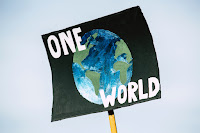In the Uncomfortable Story Column of the Catholic Peace Weekly the writer gives his understanding of what the Good Samaritan was not able to do in Luke's account of the parable. Few are those not familiar with the Good Samaritan, believers or not. Jesus gave this parable in response to the doctor of the law in an example of what it means to love your neighbors as yourself, many similar stories in other traditions besides the Christian Bible.
Mencius mentions the child who falls into a well, once known, all will quickly run to save the child. This is the human natural compassion expressed with the Chinese character (仁) benevolent, kind hearted. You have the character for a person and the number two.Everything begins from here—source and the bases of conduct. Peter Singer is a utilitarian, a well known present day philosopher. In utilitarianism, an action is judged not by its intrinsic nature, but by its consequences.He gives a very natural utilitarian morality to rid the world of poverty and the dilemma present.
The writer wonders whether his acts of charity are from the selfish motive of self-satisfaction. Maybe his personal acts are like pouring water into a bottomless earthenware pot. And wonders if his philanthropy and giving may serve to sustain this unequal world rather than change it. Philanthropists Bill Gates and Warren Buffett, who say they donate huge sums to help "capitalism from collapsing," may be more honest.
This was the dilemma that he has not been able to solve since he was in his 20s. Should we do the philanthropy that will perpetuate what is wrong with the world, or should we focus our energy on more fundamental reforms? It is funny that people who are neither social activists nor politicians have such concerns, but it is a topic that a good Samaritan with a literal sense of pity would have thought about it at least once. The answer is easy. You don't have to choose one of the two. A child who has fallen into a well must be rescued immediately, while at the same time to remove the well from the children's play area.
However, the reality is not that simple. Even people who usually feel sympathy and compassion for people with disabilities criticize them once they take part in subway protests. Could our compassion and charity work only as long as it doesn't harm me? The poor and needy are the object of compassion and care, but the moment they ask us to act responsibly and claim their rights, they become legal objects.
I don't believe there was any lack of compassion in the president's heart as he looked into the homes of the semi-subterranean flood victims. But the moment they stand up like disabled people, they will be subject to legal punishment. In this way, our compassion can always turn into anger, and a merciful ruler can always turn into a public security officer. Such is the nature of caring and charity.
The main function of the medieval church was to provide relief to the poor and the disabled through a charitable system. The image of the compassionate Blessed Virgin was transferred to the church as a nourishing mother church called 'Alma Mater', and the thinking that the rich and the church obtain salvation by helping the poor, and the poor continue to survive when this is established. This changed to the logic of rehabilitating beggars and criminals and turning them back into laborers with educational centers and mental hospitals in the early days of capitalism. As Michel Foucault said, 'monitoring and punishing' only changed its face to 'management and care'.
He wonders if our church is still in the Middle Ages. We try to fulfill the social responsibility of the church through numerous care facilities and charities. However, welfare, no matter how wide spread it may be, it's not the same as solving inequality. This can be directly applied to the climate problem. Aren't we the ones who sort out recyclables to separate and dispose of every day, leaving the companies that mass-produce products that will become garbage and the capital that uses huge fossil fuels as they are?It is not enough to be a good Samaritan.You have to catch the robber.






